
How to Use Green led: Examples, Pinouts, and Specs
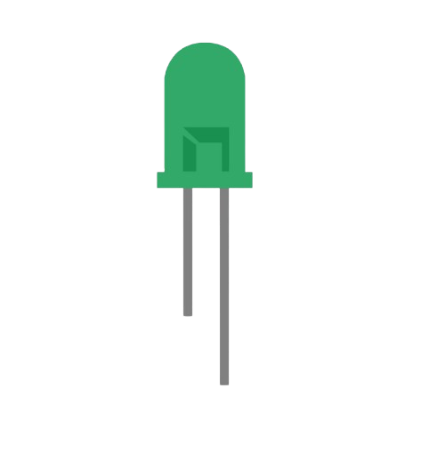
 Design with Green led in Cirkit Designer
Design with Green led in Cirkit DesignerIntroduction
The Green LED (Light-Emitting Diode) manufactured by Lina, with part ID 1, is a compact and efficient electronic component that emits green light when an electric current flows through it. It is widely used in various applications, including status indicators, displays, and decorative lighting. Its low power consumption and long lifespan make it an essential component in modern electronics.
Explore Projects Built with Green led
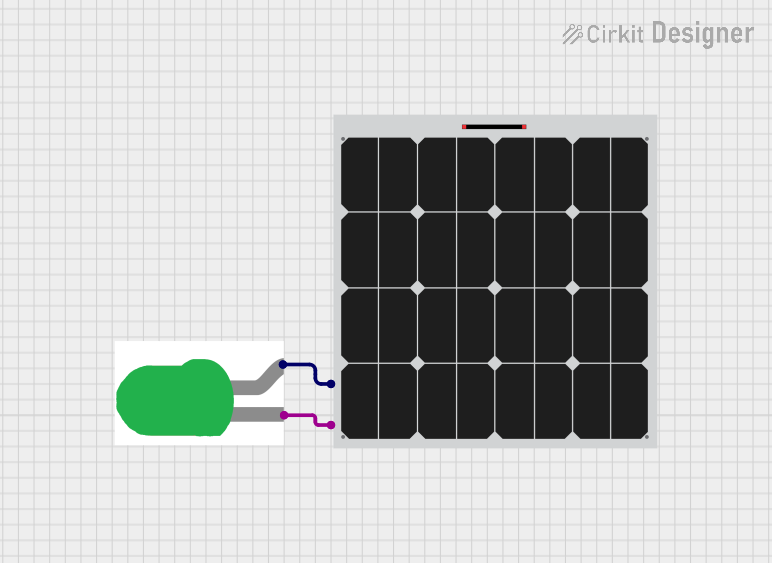
 Open Project in Cirkit Designer
Open Project in Cirkit Designer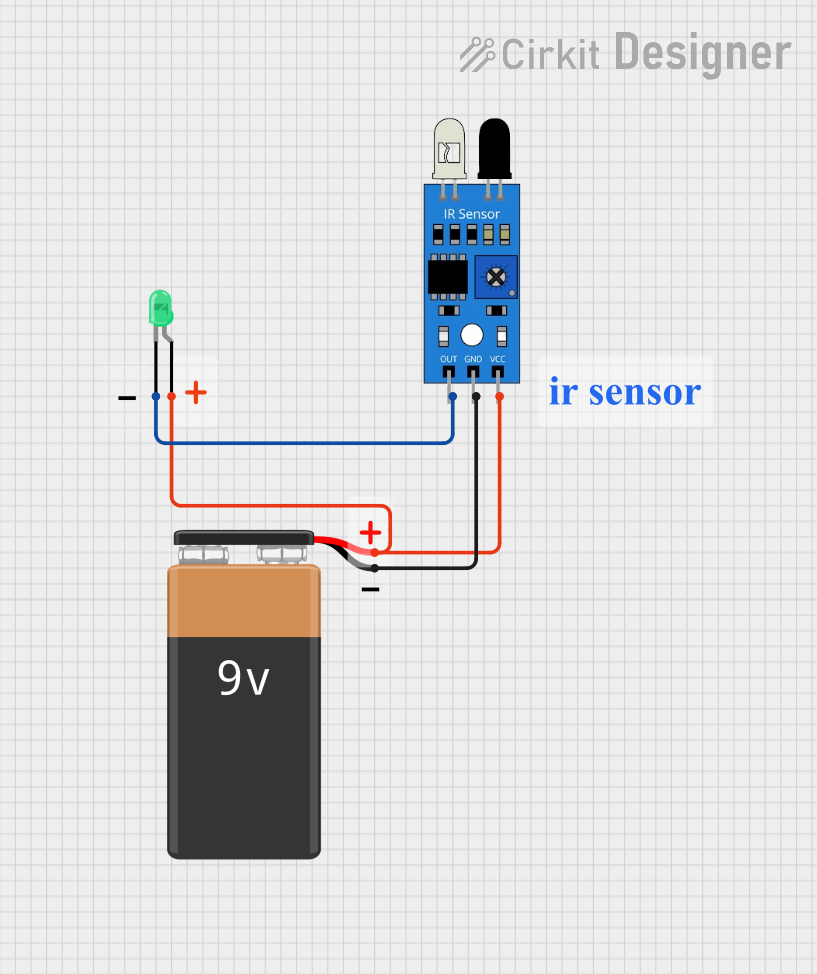
 Open Project in Cirkit Designer
Open Project in Cirkit Designer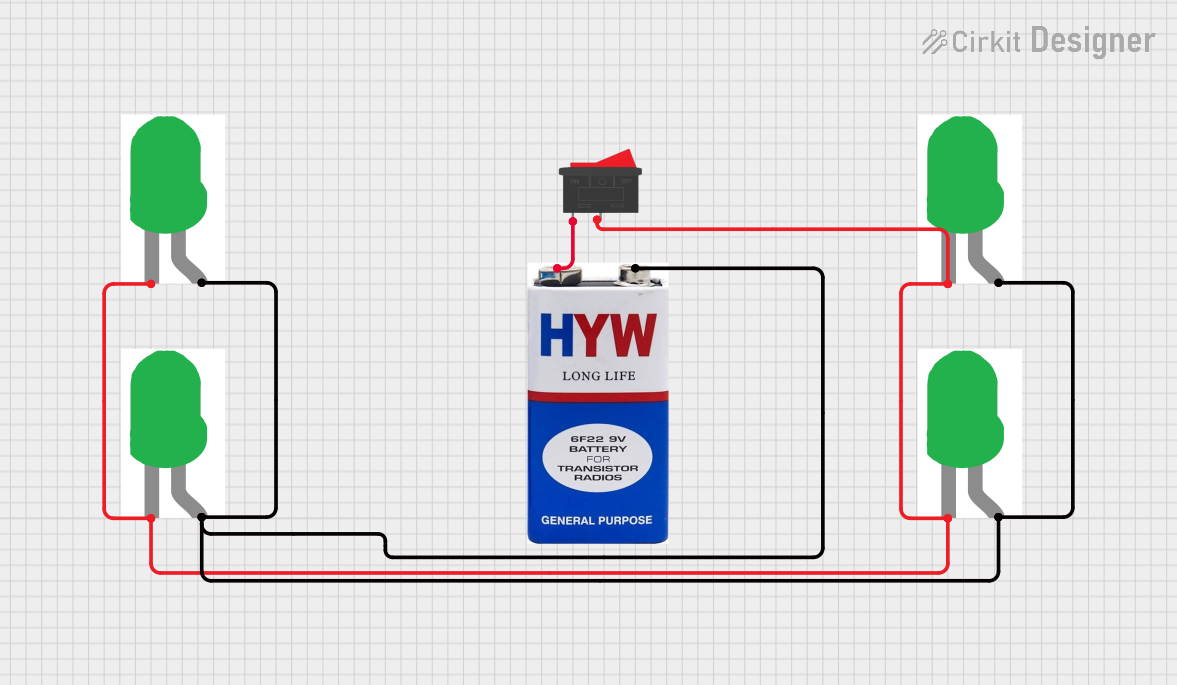
 Open Project in Cirkit Designer
Open Project in Cirkit Designer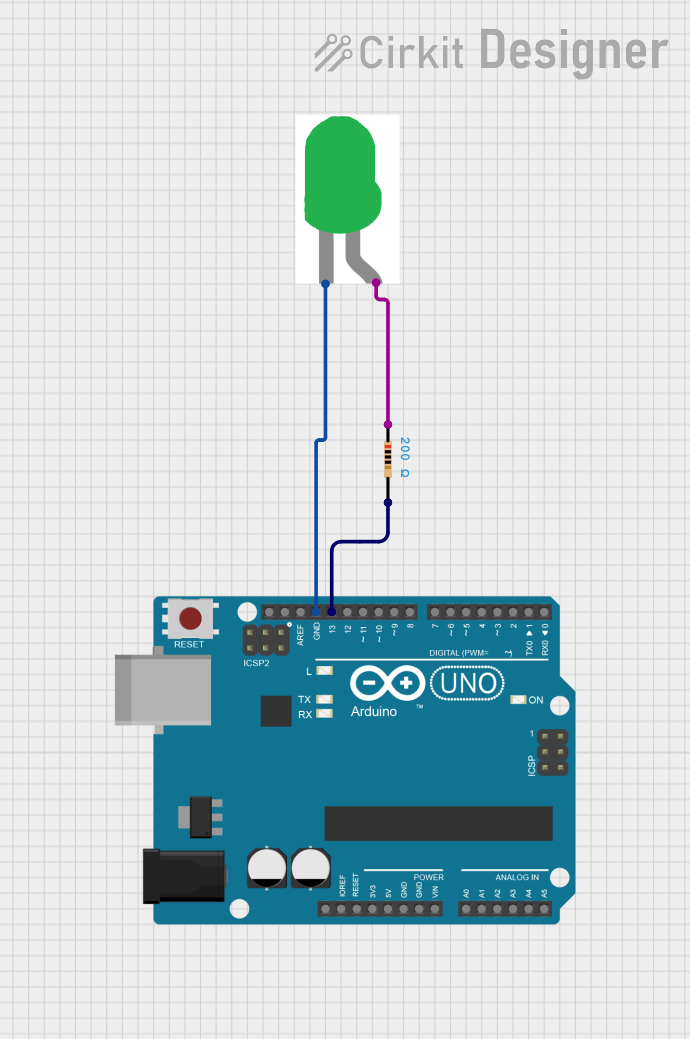
 Open Project in Cirkit Designer
Open Project in Cirkit DesignerExplore Projects Built with Green led

 Open Project in Cirkit Designer
Open Project in Cirkit Designer
 Open Project in Cirkit Designer
Open Project in Cirkit Designer
 Open Project in Cirkit Designer
Open Project in Cirkit Designer
 Open Project in Cirkit Designer
Open Project in Cirkit DesignerTechnical Specifications
Below are the key technical details for the Lina Green LED (Part ID: 1):
| Parameter | Value |
|---|---|
| Manufacturer | Lina |
| Part ID | 1 |
| Forward Voltage (Vf) | 2.0V - 2.4V |
| Forward Current (If) | 20mA (typical) |
| Maximum Current (Ifmax) | 30mA |
| Wavelength | 520nm - 530nm (green light) |
| Viewing Angle | 30° - 60° |
| Power Dissipation | 75mW (maximum) |
| Operating Temperature | -40°C to +85°C |
| Storage Temperature | -40°C to +100°C |
Pin Configuration and Descriptions
The Green LED has two pins:
| Pin | Name | Description |
|---|---|---|
| 1 | Anode (+) | The longer leg of the LED. Connect to the positive terminal of the power source. |
| 2 | Cathode (-) | The shorter leg of the LED. Connect to the negative terminal or ground. |
Usage Instructions
How to Use the Green LED in a Circuit
Determine the Resistor Value: To prevent damage to the LED, always use a current-limiting resistor in series with the LED. The resistor value can be calculated using Ohm's Law: [ R = \frac{V_{supply} - V_f}{I_f} ] Where:
- (V_{supply}) is the supply voltage.
- (V_f) is the forward voltage of the LED (2.2V typical).
- (I_f) is the desired forward current (20mA typical).
For example, if (V_{supply} = 5V): [ R = \frac{5V - 2.2V}{0.02A} = 140\Omega ] Use the nearest standard resistor value (e.g., 150Ω).
Connect the LED:
- Connect the anode (+) to the positive terminal of the power source through the resistor.
- Connect the cathode (-) to the ground.
Power the Circuit: Apply the appropriate voltage to the circuit. The LED will emit green light when current flows through it.
Important Considerations and Best Practices
- Polarity: Ensure correct polarity when connecting the LED. Reversing the polarity may damage the component.
- Current Limiting: Always use a resistor to limit the current and prevent overheating or damage.
- Heat Management: Avoid exceeding the maximum power dissipation to ensure a long lifespan.
- Series and Parallel Configurations: For multiple LEDs, calculate resistor values for each configuration.
Example: Connecting the Green LED to an Arduino UNO
Below is an example of how to connect and control the Green LED using an Arduino UNO:
Circuit Setup
- Connect the anode (+) of the LED to Arduino digital pin 9 through a 220Ω resistor.
- Connect the cathode (-) of the LED to the Arduino GND pin.
Arduino Code
// This code blinks a Green LED connected to pin 9 of the Arduino UNO.
// Ensure a 220Ω resistor is used in series with the LED to limit current.
void setup() {
pinMode(9, OUTPUT); // Set pin 9 as an output pin
}
void loop() {
digitalWrite(9, HIGH); // Turn the LED on
delay(1000); // Wait for 1 second
digitalWrite(9, LOW); // Turn the LED off
delay(1000); // Wait for 1 second
}
Troubleshooting and FAQs
Common Issues and Solutions
LED Does Not Light Up:
Cause: Incorrect polarity.
Solution: Ensure the anode is connected to the positive terminal and the cathode to ground.
Cause: No current-limiting resistor or incorrect resistor value.
Solution: Verify the resistor value and ensure it is connected in series with the LED.
LED is Dim:
- Cause: Insufficient current.
- Solution: Check the resistor value and ensure the supply voltage is adequate.
LED Overheats or Burns Out:
- Cause: Excessive current.
- Solution: Use a resistor with the correct value to limit the current.
Flickering LED:
- Cause: Unstable power supply or loose connections.
- Solution: Check the power source and ensure all connections are secure.
FAQs
Q: Can I connect the Green LED directly to a 5V power source?
A: No, you must use a current-limiting resistor to prevent damage to the LED.Q: What happens if I reverse the polarity of the LED?
A: The LED will not light up, and prolonged reverse connection may damage it.Q: Can I use the Green LED with a 3.3V microcontroller?
A: Yes, but ensure the resistor value is calculated for the 3.3V supply voltage.Q: How do I connect multiple Green LEDs in a circuit?
A: For series connections, sum the forward voltages and calculate the resistor value. For parallel connections, use individual resistors for each LED.
This documentation provides all the necessary details to effectively use the Lina Green LED (Part ID: 1) in your projects.